Bill D. (VA)
Silver Member
Wow — I don’t know where to begin as this was totally unexpected. My detecting bud Joey and I hooked up yesterday to make the long drive to a remote rural county where we’ve researched and hunted together before. After securing permission from the owner/farmer at a site Joey had been studying, we made our way to the expansive fields that overlooked the river. Joey’s research also revealed what he believed might be an early house site on a knoll about ¼ mile from the river’s edge. We began hunting there and quickly noticed that small iron and brick frags were spread out over a rather large area, but not really concentrated in any given spot. Our finds were rather paltry in number, and when we were leaving later in the day a hunter told us that a couple friends of his had been hunting that site methodically for years which explained the lack of finds.
Anyway, we picked up a few 17[SUP]th[/SUP] century buckle pieces, musketballs and some early pewter buttons but nothing of real significance. It was interesting to note that neither of us dug any flat or even tombac buttons which, along with the other finds, seemed to confirm this was a very early site that had been abandoned after being occupied for a limited time.
About halfway into the hunt I decided to make a big loop through the field between the knoll and the river. On the way back toward the knoll I tried to walk the most likely path the early settlers might have taken between the dwelling site and where we believed the early wharf might have been. But the field was absolutely dead silent until I was about 100 yards in front of the knoll when I got a nice hit that sounded like it might be another musketball. But as I flipped the dirt out of the hole I thought I caught a brief glimpse of what appeared to be a silver edge before it was re-covered. But I convinced myself that I was probably seeing things. Then when I finally located the target I was super excited to see that I had indeed unearthed a silver coin of some sort. As I picked it up with the dirt still clinging to it I saw a shield and immediately thought I might be holding an early 1700s pistareen. At that point I hollered over to Joey and headed toward where he was hunting. While on the way I flipped the coin over and the bust was very strange looking and I knew for sure this coin was not Spanish, or at least was one I did not recognize. I carefully removed more of the dirt to reveal more details, and my first thought was could this coin be an example of Lord Baltimore coinage? But that was probably very wishful thinking as there’s absolutely no way I could have recovered something so rare and valuable as that. Joey dismissed that idea as well and seemed to think it might be some obscure coin from a European country, and had me convinced that was the case as well. It was definitely a strange coin with no date and all the Latin inscriptions. So I plopped it in my padded keeper box and figured I could do some research on it when I got back home.
A little while later I got to thinking about the coin, and began to convince myself that it had a chance to be a Lord Baltimore specimen. I had just finished writing an article for one of the detecting magazines on the history of colonial silver coinage in Virginia, and it included a paragraph on these rare coins so I had some familiarity with them already. I also recounted from a few years ago when my friend Stan and his buddy Audie dug a Lord Baltimore silver groat and copper denarium, the latter which sold at auction for about $42,000. As Joey and I headed back to the truck for a lunch break I told him I was about 80% convinced my find was a Lord Baltimore coin. We both frantically got out our phones and quickly tried to verify, and Joey beat me to the punch. He was flabbergasted when he confirmed I had indeed just recovered a Lord Baltimore silver sixpence dating to 1659! This is one of the holy grails of US coins and we were both in complete shock. I later saw on the NGC website where it was stated that Lord Baltimore coinage is “decidedly rarer” than Massachusetts silver which confirmed what I already knew as these coins are almost impossible to find. Mine appears to be the Breen 68 variety and although it does have a few small spots of surface corrosion on both sides, I believe a professional coin cleaning can remedy that rather easily. But I’m definitely not going to mess with it myself (no electrolysis this time …. haha!). I also plan to have it authenticated, graded and slabbed. If anyone has any good recommendations for where to get this coin cleaned and authenticated please post your comments here. Thanks in advance for any input. And unfortunately the coin is holed (even though I think it gives it character) and that will likely detract from its value, but that’s not a major concern for me since it definitely WILL NOT be sold.
I thought I’d end with a little background on the history of this coin for those interested. Three denominations of silver coinage plus a copper denarium were minted in London in 1659 by authority of Cecil Calvert, the second Lord Baltimore, who believed he had the right to coin money for use in the huge tract of land he inherited which later became the colony of Maryland. His authority to issue these coins was challenged and he was arrested, and only a small number were ever produced before being confiscated by the Crown, but a very small number of these apparently got into circulation somehow and some must have made it to the colonies through the pockets of early settlers. So these are extremely rare finds here in the US as well as in the UK, and the 2 that Stan and Audie dug are the only other ones I’ve ever heard of being dug in this country. I’m still pinching myself as I never thought I’d ever dig one of these beauties. Hopefully this is a good omen for the rest of the season.
Anyway, we picked up a few 17[SUP]th[/SUP] century buckle pieces, musketballs and some early pewter buttons but nothing of real significance. It was interesting to note that neither of us dug any flat or even tombac buttons which, along with the other finds, seemed to confirm this was a very early site that had been abandoned after being occupied for a limited time.
About halfway into the hunt I decided to make a big loop through the field between the knoll and the river. On the way back toward the knoll I tried to walk the most likely path the early settlers might have taken between the dwelling site and where we believed the early wharf might have been. But the field was absolutely dead silent until I was about 100 yards in front of the knoll when I got a nice hit that sounded like it might be another musketball. But as I flipped the dirt out of the hole I thought I caught a brief glimpse of what appeared to be a silver edge before it was re-covered. But I convinced myself that I was probably seeing things. Then when I finally located the target I was super excited to see that I had indeed unearthed a silver coin of some sort. As I picked it up with the dirt still clinging to it I saw a shield and immediately thought I might be holding an early 1700s pistareen. At that point I hollered over to Joey and headed toward where he was hunting. While on the way I flipped the coin over and the bust was very strange looking and I knew for sure this coin was not Spanish, or at least was one I did not recognize. I carefully removed more of the dirt to reveal more details, and my first thought was could this coin be an example of Lord Baltimore coinage? But that was probably very wishful thinking as there’s absolutely no way I could have recovered something so rare and valuable as that. Joey dismissed that idea as well and seemed to think it might be some obscure coin from a European country, and had me convinced that was the case as well. It was definitely a strange coin with no date and all the Latin inscriptions. So I plopped it in my padded keeper box and figured I could do some research on it when I got back home.
A little while later I got to thinking about the coin, and began to convince myself that it had a chance to be a Lord Baltimore specimen. I had just finished writing an article for one of the detecting magazines on the history of colonial silver coinage in Virginia, and it included a paragraph on these rare coins so I had some familiarity with them already. I also recounted from a few years ago when my friend Stan and his buddy Audie dug a Lord Baltimore silver groat and copper denarium, the latter which sold at auction for about $42,000. As Joey and I headed back to the truck for a lunch break I told him I was about 80% convinced my find was a Lord Baltimore coin. We both frantically got out our phones and quickly tried to verify, and Joey beat me to the punch. He was flabbergasted when he confirmed I had indeed just recovered a Lord Baltimore silver sixpence dating to 1659! This is one of the holy grails of US coins and we were both in complete shock. I later saw on the NGC website where it was stated that Lord Baltimore coinage is “decidedly rarer” than Massachusetts silver which confirmed what I already knew as these coins are almost impossible to find. Mine appears to be the Breen 68 variety and although it does have a few small spots of surface corrosion on both sides, I believe a professional coin cleaning can remedy that rather easily. But I’m definitely not going to mess with it myself (no electrolysis this time …. haha!). I also plan to have it authenticated, graded and slabbed. If anyone has any good recommendations for where to get this coin cleaned and authenticated please post your comments here. Thanks in advance for any input. And unfortunately the coin is holed (even though I think it gives it character) and that will likely detract from its value, but that’s not a major concern for me since it definitely WILL NOT be sold.
I thought I’d end with a little background on the history of this coin for those interested. Three denominations of silver coinage plus a copper denarium were minted in London in 1659 by authority of Cecil Calvert, the second Lord Baltimore, who believed he had the right to coin money for use in the huge tract of land he inherited which later became the colony of Maryland. His authority to issue these coins was challenged and he was arrested, and only a small number were ever produced before being confiscated by the Crown, but a very small number of these apparently got into circulation somehow and some must have made it to the colonies through the pockets of early settlers. So these are extremely rare finds here in the US as well as in the UK, and the 2 that Stan and Audie dug are the only other ones I’ve ever heard of being dug in this country. I’m still pinching myself as I never thought I’d ever dig one of these beauties. Hopefully this is a good omen for the rest of the season.
Attachments
-
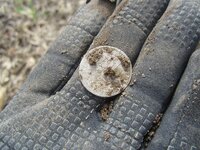 100414a.JPG351.4 KB · Views: 1,103
100414a.JPG351.4 KB · Views: 1,103 -
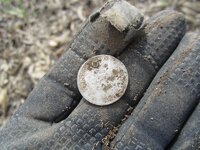 100414b.JPG344.9 KB · Views: 1,101
100414b.JPG344.9 KB · Views: 1,101 -
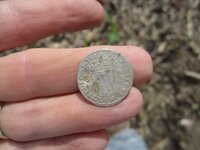 100414c.JPG133.7 KB · Views: 1,318
100414c.JPG133.7 KB · Views: 1,318 -
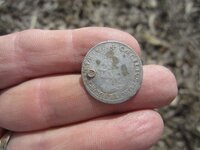 100414d.JPG174.7 KB · Views: 1,487
100414d.JPG174.7 KB · Views: 1,487 -
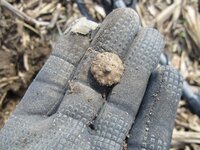 100414e.JPG237.7 KB · Views: 925
100414e.JPG237.7 KB · Views: 925 -
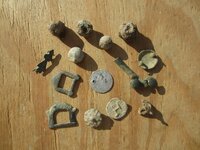 100414f.JPG279.4 KB · Views: 994
100414f.JPG279.4 KB · Views: 994 -
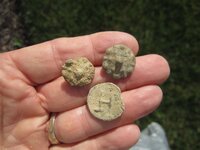 100414g.JPG152.9 KB · Views: 891
100414g.JPG152.9 KB · Views: 891 -
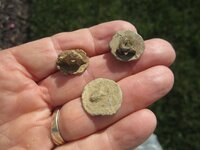 100414h.JPG155.4 KB · Views: 856
100414h.JPG155.4 KB · Views: 856 -
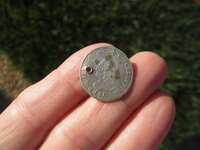 100414i.JPG159.7 KB · Views: 1,303
100414i.JPG159.7 KB · Views: 1,303 -
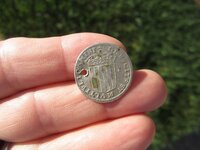 100414j.JPG177.4 KB · Views: 1,280
100414j.JPG177.4 KB · Views: 1,280 -
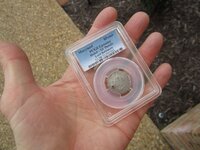 lord baltimore in slab.jpg134.7 KB · Views: 715
lord baltimore in slab.jpg134.7 KB · Views: 715
Last edited:
Upvote
71








